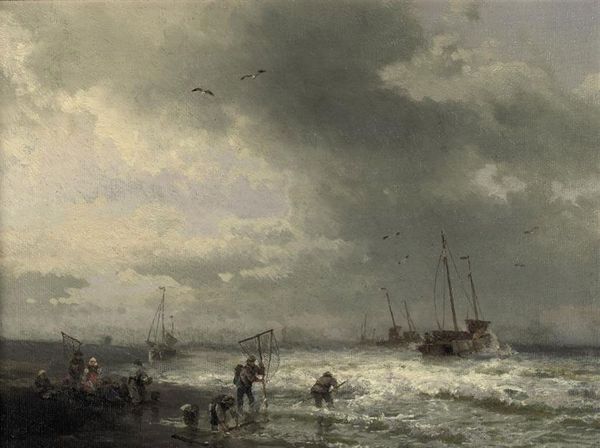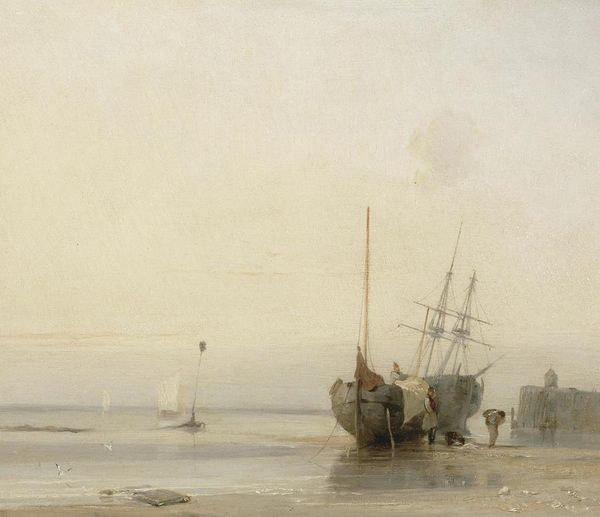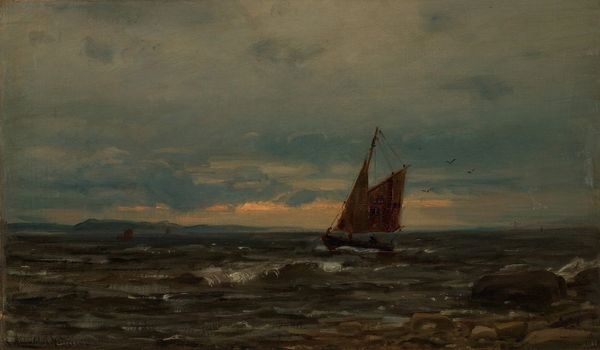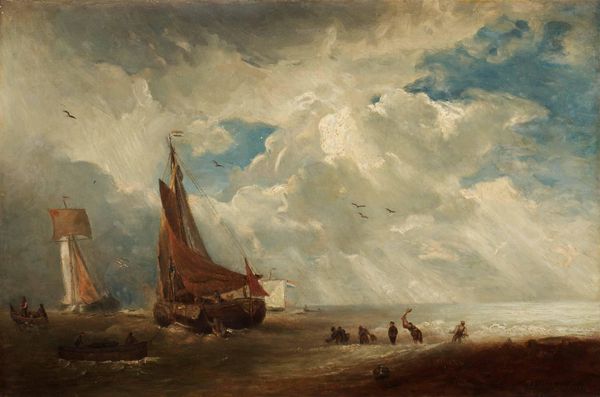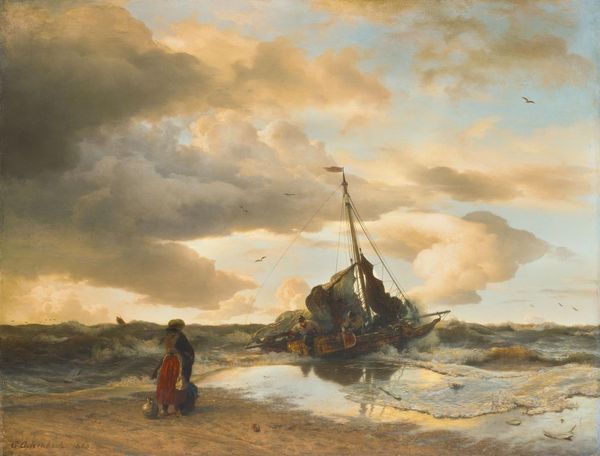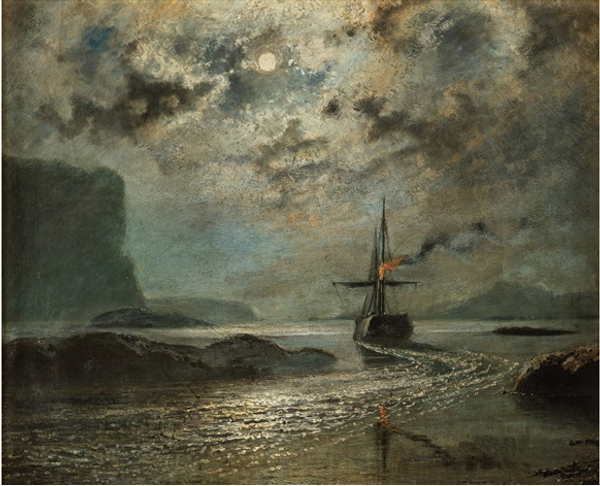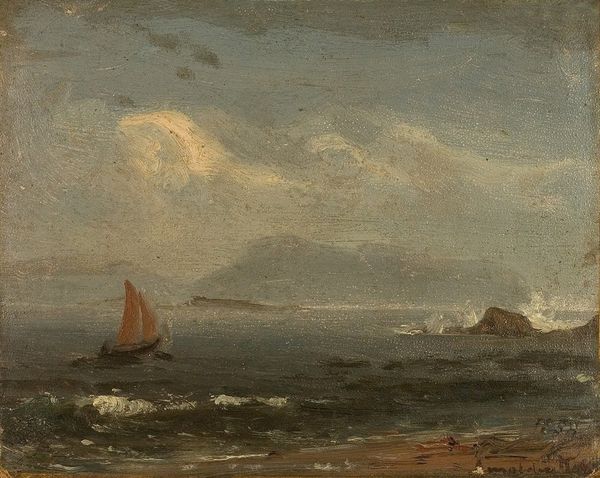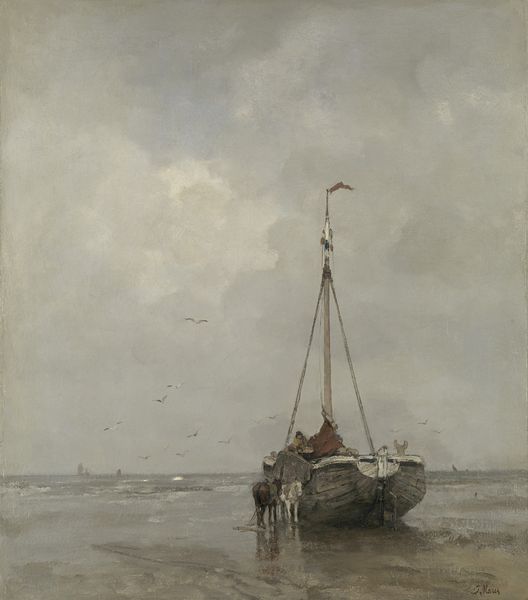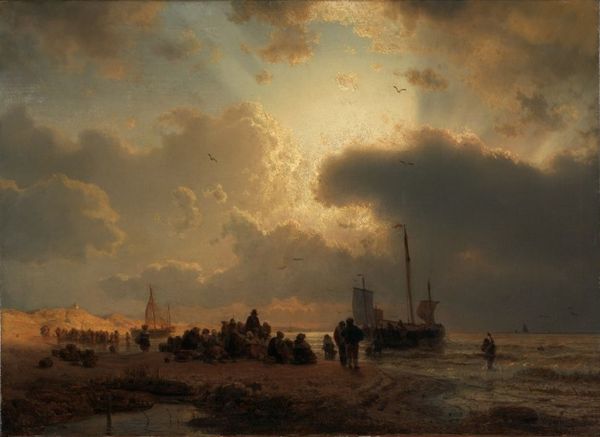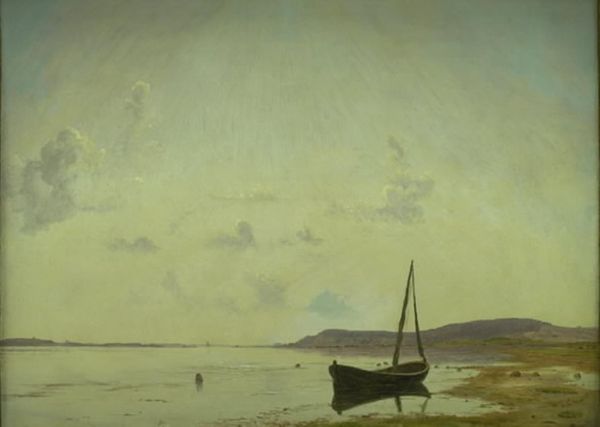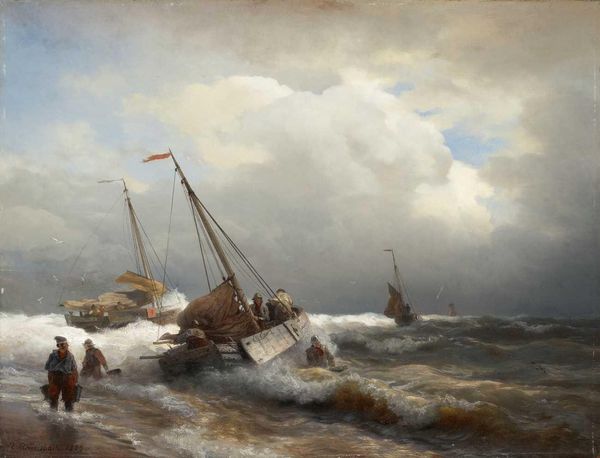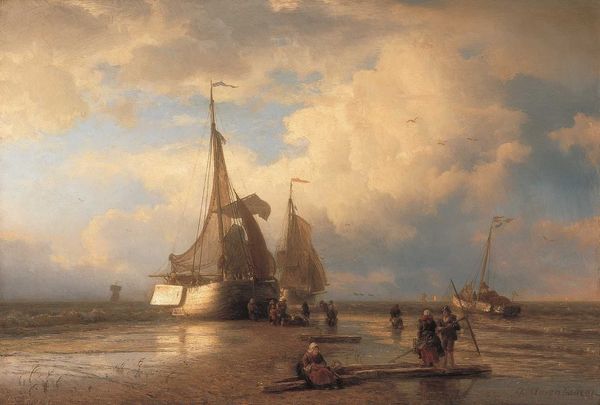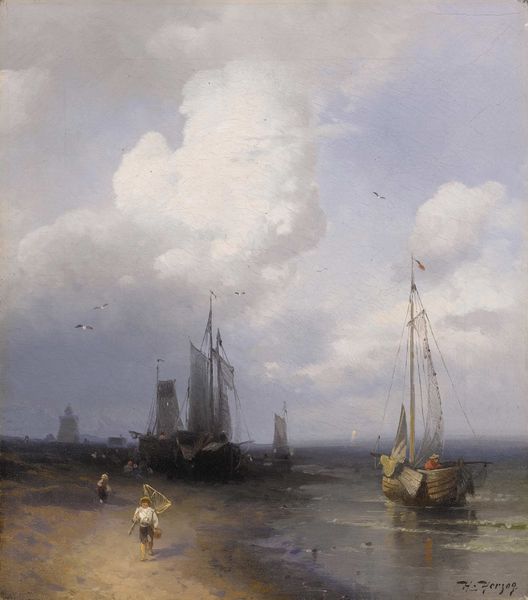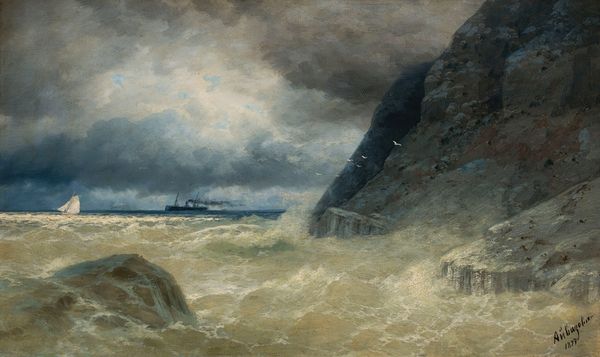
oil-paint
#
oil-paint
#
landscape
#
oil painting
#
romanticism
#
genre-painting
Dimensions: height 23.8 cm, width 34 cm, depth 6.5 cm
Copyright: Rijks Museum: Open Domain
Editor: We’re looking at Louis Meijer's "Along the Coast," painted between 1840 and 1850 using oil paint. The overall tone feels heavy and contemplative. What stands out to you when you look at this work? Curator: What strikes me is the dramatic sky; the symbolism of turbulent skies often reflects emotional upheaval or societal unrest. And look closely—do you see the figures pulling the boat ashore? Editor: Yes, they're almost lost in the vastness of the scene, aren’t they? Curator: Precisely. It invites us to contemplate the relationship between humanity and nature, the struggle and resilience. In Romanticism, the sea is used as a space of transition or mediation, especially when used in correlation to land. Also, notice the contrasting use of light, in the center. The light pulls our attention between the heaviness in the clouds above, and what is physically taking place. What memories or emotions does this evoke in you? Editor: It reminds me of stories of fishermen braving harsh conditions, a sort of timeless struggle. But what about the cultural context? Curator: Genre painting gained prominence at the time due to the industrial age. Romanticism helped evoke a sense of yearning for a past that idealized those kinds of laborers. So perhaps it points to this nostalgic view, imbuing their toil with symbolic weight. This painting is not just about a coastal scene, it is also an icon representing the fortitude of the working class, and their impact to society, through iconography that alludes to both their time, and the cultural history attached to the role that these workers play in culture. Editor: That's a perspective I hadn't considered! I'm starting to see more depth beyond just the surface of the painting. Curator: Art becomes truly rich when we engage with its layered meanings and symbols and understand them, don’t you agree?
Comments
No comments
Be the first to comment and join the conversation on the ultimate creative platform.
